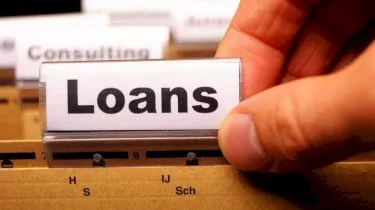Borrow
Our guide to the 8 most popular types of loans for Small and Medium-sized Enterprises (SMEs)
Borrow
Our guide to the 8 most popular types of loans for Small and Medium-sized Enterprises (SMEs)
Starting, expanding and managing a business requires funding that may not always be readily available to entrepreneurs and small-business owners. Financial institutions offer business loans that could meet your needs, but they usually have strict qualifications for start-ups and small- to medium-sized enterprises (SMEs).
Our guide to the 8 most popular types of loans for Small and Medium-sized Enterprises (SMEs)
Starting, expanding and managing a business requires funding that may not always be readily available to entrepreneurs and small-business owners. Financial institutions offer business loans that could meet your needs, but they usually have strict qualifications for start-ups and small- to medium-sized enterprises (SMEs).

However, business owners in need of financing might have multiple options beyond the bank.
Types of loans
Here’s a quick summary of the eight most popular types of business loans available to SME owners.
Business Term Loans
|
Good for: Established businesses with good credit scores  Not great for: Newer businesses without a solid business plan |
Business owners usually apply for term loans to borrow a lump sum of capital.
Term loans are traditional commercial short-term or long-term loans from a bank. These may be secured or unsecured loan and have fixed or variable interest rates. Other fees and charges may also apply on top of the loan repayments (i.e. principal and interest).
The “term” in “term loan” comes from its set repayment term length, which will typically be one year to five years long. Applying for a term loan requires a lot of documentation and, if approved, it may still take up to two months before any money is released to the business.
For business owners, this means if you want to apply for term loans, you definitely need to plan in advance to accommodate for all the paperwork and business plan you’ll be required to provide.
Business Credit Card
|
Good for: If you need quick cash to pay for expenses Not great for: Long-term financing or large sum of capital |
Business credit cards work like personal credit cards but are only issued to businesses that provide an Australian business number (ABN).
These cards may offer features that are tailored to meet the business’s requirements. For instance, financial institutions may issue separate personal cards to staff or managers with an individual or combined limit. The cards may also be bundled with rewards features like frequent flyer points – a welcome perk if the business requires frequent travel.
Business credit cards also usually come with expense reporting tools so business owners can keep track of how and for what purpose the staff-issued cards are used.
Since this is primarily a credit card, credit scores and financial records may affect a business credit card’s credit limit.
Business Overdraft
|
Good for: Businesses needing flexible cash flows Not great for: Long-term financing or large sum of capital |
Business overdraft refers to a type of credit account that allows businesses to have a negative balance up to a certain limit and only pay interest on the overdrawn amount.
It’s basically a line of credit that only becomes accessible when the account owner has exhausted the money in their transaction account. A business overdraft can use business assets or property (commercial, residential or rural) as security.
The advantage of business overdrafts is that they usually have lower interest rates compared to credit cards. Many institutions do not have fixed or minimum mandatory repayments on the business overdraft facility. There’s also no regular repayment schedules wherein the entire borrowed amount must be paid in full.
Business overdrafts are most suitable for businesses that need short-term loans and have fluctuating cash flows.
*Canstar database shows that financial institutions are offering a maximum credit limit of $500,000 up to a $100 million.
Credit lines
|
Good for: Business owners with average to good credit scores who need cash for unexpected expenses or emergencies Not great for: Businesses with bad credit scores or are launching a brand new business |
Business lines of credit works like a pre-approved loan with a credit limit – but with the added advantage of flexible withdrawals and payment terms.
A business that applies for a line of credit is usually given a maximum amount that they can borrow from the bank or credit provider. Business owners can take out a loan for any amount between the minimum and the credit limit and they are only liable to pay interest on the borrowed amount.
Note that line of credit interest rates are usually higher compared to business term loans, and there are monthly fees to be paid to keep the line open. Credit lines are usually kept open indefinitely, although the terms are subject to review every few years.
Invoice financing
|
Good for: B2B businesses that need help with cash flow problems from unpaid invoices Not great for: Businesses that do not invoice customers, or B2C |
Invoice financing is when a business uses its unpaid invoices as collateral for a loan in order to improve cash flow. The business owner is given access to financing based on the assessed amount and, in turn, the lender takes charge of collecting the money that the business is owed.
Businesses may not be given access to the full amount they are owed as lenders will still assess whether the debtors can pay the company.
In many cases, lenders hold a portion of the invoiced amount in reserve. This means that the business will not be given the held portion until all invoices are fully paid. The factoring fee – a one-time fee charged on the gross invoice – will be taken from the invoice amount in reserve.
This is also known as invoice factoring.
Merchant cash advance
|
Good for: Last resort for business owners who are not qualified for other types of business loans Not great for: Business owners with bad credit and businesses that are only starting out |
Merchant cash advance (MCA) is similar to term loans in that they’ll both be given access to a lump sum of funding. In exchange for MCA, businesses will give their lenders access to a percentage of future debit and credit sales.
MCA is best for small and short term loans, but it’s not a recommended solution for businesses as these usually carry very high interest rates.
Commercial real estate loan
|
Good for: SME owners who want to buy their own premises and can afford the minimum 20-30 per cent deposit with the ability to pay back the loan in under 30 years Not great for: SME owners who want to buy their own premises but cannot afford the minimum 20-30 per cent deposit and lack the ability to pay back the loan in under 30 years |
As its name suggests, commercial real estate loans are loans that are marketed specifically for companies that require money to purchase or construct a commercial property.
This is a secured loan as the purchased or constructed property is used as collateral. Lender have rights to the property and can choose to sell it should the business/borrower default on the loan.
Commercial real estate loans are better for businesses that require financing to purchase or build a commercial property as they usually have better interest rates than business term loans.
Personal loan
|
Good for: SME owners with great credit scores who need short-term cash solutions to cover for business expenses Not great for: SME owners with limited credit scores and average income level |
A personal loan isn’t exactly a business loan, but start-ups and SME owners do take out personal loans to cover their business expenses.
The downside to personal loans is they usually have a lower limit compared to business term loans – unless the borrower has ultra high net worth and income and has an excellent credit score. Any late repayment or a default will also affect the borrower’s personal credit score and will make it difficult for them to get approved for another personal loan in the future.
Some lenders also do not allow for borrowers to use their personal loan funds for business activities.
Business loans can help SMEs with short-term financing, but it’s important to apply for a loan that addresses specific needs. Determine what the business requires and how the funds will be used first then compare different lenders and terms before applying for a loan.
Don’t forget that missed payments and defaults can affect either the business or the owner’s credit score, so make sure to understand all aspects of the loan under consideration prior to application.
Explore Nest Egg for more information on borrowing.
About the author

About the author


Loans
Fixing the future: How brokers and lenders can turn rate-hike anxiety into strategic advantage
Australian borrowers are leaning into short-term fixed loans as rate uncertainty lingers, shifting risk from households to lenders and their funding partners. That creates a narrow window for broker ...Read more

Loans
Mortgage mania: Why sluggish turnaround times are the new battleground in booming loan demand
Brokers across Australia are flagging loan processing delays precisely as borrower activity rebounds — a dangerous mismatch for lenders competing on service as much as price. The operational lesson is ...Read more

Loans
Why AI isn't penning Aussie mortgages yet trust trumps tech
Australian borrowers remain wary of AI taking the wheel on home loans, even as brokers and lenders quietly increase behind-the-scenes adoption. The trust gap is the core blocker — and it’s solvable. ...Read more

Loans
Underserved by design: A case study in turning FBAA broker density gaps into growth
Fresh FBAA data confirms broker headcount is rising past 22,000, yet coverage remains uneven — with concentrations in NSW and Victoria and pockets the association identifies as underservedRead more

Loans
The new shadow lender: How the ‘Bank of Mum and Dad’ is redrawing Australia’s first-home buyer market
Parental capital has become a decisive force in Australia’s housing market, accelerating deposits, lifting bidding power and creating a two‑speed pipeline of first‑home buyers. This isn’t a feel‑good ...Read more

Loans
The effortless edge: How Australian brokers turn retention into a compounding growth engine with AI and specialisation
Australia’s broking market is crowded, digital-first and unforgiving on acquisition costs. The growth story now is retention—engineered through low-effort client experiences, AI-enabled servicing and ...Read more

Loans
State Street: RBA holds rates at 3.6% as hawkish tone emerges
State Street has said the Reserve Bank of Australia’s (RBA) decision to hold the cash rate at 3.6 per cent reflects a more hawkish policy bias, signalling that the central bank is likely to keep rates ...Read more

Loans
The effortless edge: How brokers turn low-friction service into high-retention value
Client retention in broking is no longer about squeezing a better rate at renewal. It’s about building an ‘effortless’ experience that anticipates needs, removes friction, and compounds loyalty across ...Read more

Loans
Fixing the future: How brokers and lenders can turn rate-hike anxiety into strategic advantage
Australian borrowers are leaning into short-term fixed loans as rate uncertainty lingers, shifting risk from households to lenders and their funding partners. That creates a narrow window for broker ...Read more

Loans
Mortgage mania: Why sluggish turnaround times are the new battleground in booming loan demand
Brokers across Australia are flagging loan processing delays precisely as borrower activity rebounds — a dangerous mismatch for lenders competing on service as much as price. The operational lesson is ...Read more

Loans
Why AI isn't penning Aussie mortgages yet trust trumps tech
Australian borrowers remain wary of AI taking the wheel on home loans, even as brokers and lenders quietly increase behind-the-scenes adoption. The trust gap is the core blocker — and it’s solvable. ...Read more

Loans
Underserved by design: A case study in turning FBAA broker density gaps into growth
Fresh FBAA data confirms broker headcount is rising past 22,000, yet coverage remains uneven — with concentrations in NSW and Victoria and pockets the association identifies as underservedRead more

Loans
The new shadow lender: How the ‘Bank of Mum and Dad’ is redrawing Australia’s first-home buyer market
Parental capital has become a decisive force in Australia’s housing market, accelerating deposits, lifting bidding power and creating a two‑speed pipeline of first‑home buyers. This isn’t a feel‑good ...Read more

Loans
The effortless edge: How Australian brokers turn retention into a compounding growth engine with AI and specialisation
Australia’s broking market is crowded, digital-first and unforgiving on acquisition costs. The growth story now is retention—engineered through low-effort client experiences, AI-enabled servicing and ...Read more

Loans
State Street: RBA holds rates at 3.6% as hawkish tone emerges
State Street has said the Reserve Bank of Australia’s (RBA) decision to hold the cash rate at 3.6 per cent reflects a more hawkish policy bias, signalling that the central bank is likely to keep rates ...Read more

Loans
The effortless edge: How brokers turn low-friction service into high-retention value
Client retention in broking is no longer about squeezing a better rate at renewal. It’s about building an ‘effortless’ experience that anticipates needs, removes friction, and compounds loyalty across ...Read more








